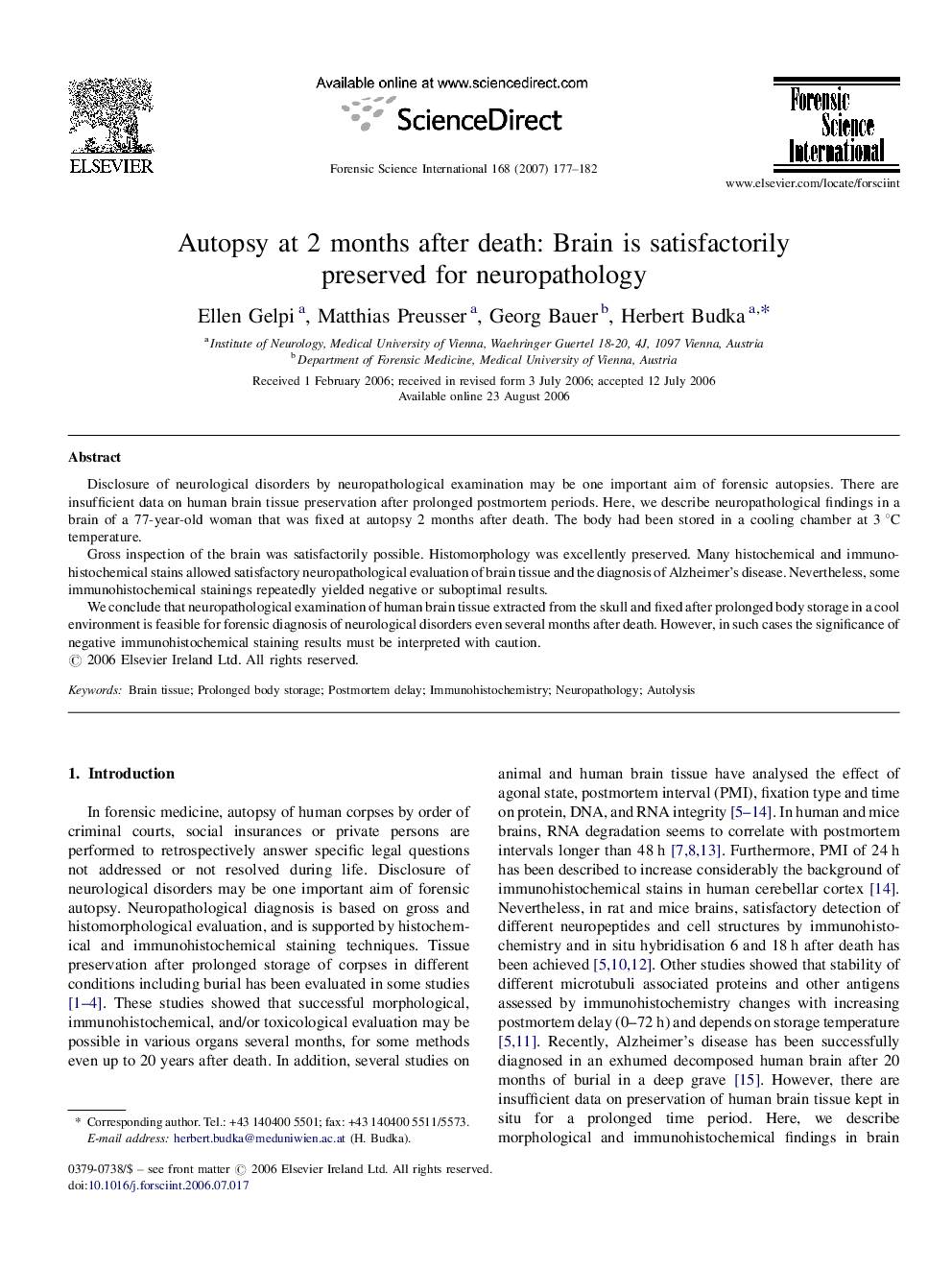| Article ID | Journal | Published Year | Pages | File Type |
|---|---|---|---|---|
| 98022 | Forensic Science International | 2007 | 6 Pages |
Disclosure of neurological disorders by neuropathological examination may be one important aim of forensic autopsies. There are insufficient data on human brain tissue preservation after prolonged postmortem periods. Here, we describe neuropathological findings in a brain of a 77-year-old woman that was fixed at autopsy 2 months after death. The body had been stored in a cooling chamber at 3 °C temperature.Gross inspection of the brain was satisfactorily possible. Histomorphology was excellently preserved. Many histochemical and immunohistochemical stains allowed satisfactory neuropathological evaluation of brain tissue and the diagnosis of Alzheimer's disease. Nevertheless, some immunohistochemical stainings repeatedly yielded negative or suboptimal results.We conclude that neuropathological examination of human brain tissue extracted from the skull and fixed after prolonged body storage in a cool environment is feasible for forensic diagnosis of neurological disorders even several months after death. However, in such cases the significance of negative immunohistochemical staining results must be interpreted with caution.
